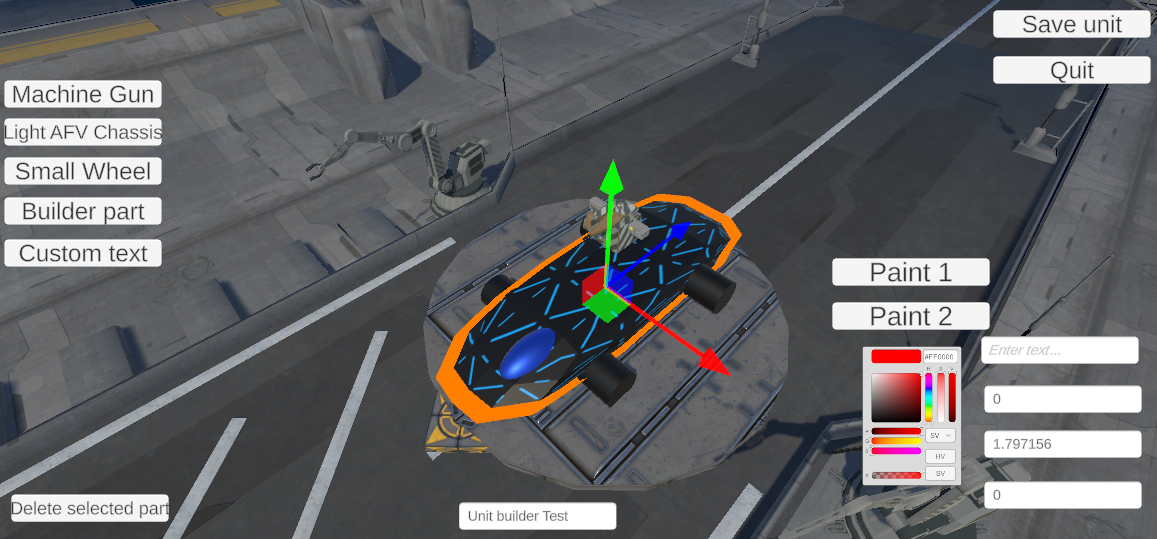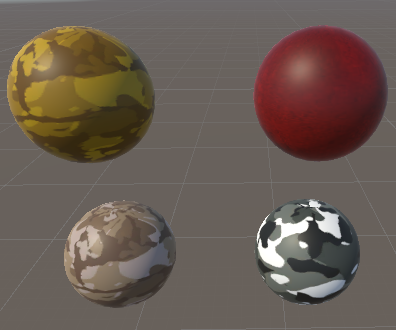Customizable vehicles
Hello there. I'm working on a real time strategy game called Dropzone. Dropzone is a classic RTS game featuring resource gathering, base building, and commanding armies of units. This is the first of a series of devlog posts talking about what's in the game and how it's being made. I've been working on this in my spare time and I'm about ready to show off what I've been making.
One of the core ideas of Dropzone is the ability to create your own RTS units. Something similar to the Spore vehicle editor or Lego bricks, except you can bring it to life in a combat sandbox. In Dropzone, players are able to design and deploy custom made vehicles created from scratch using different parts. These can include armor, weapons, wheels, and anything else. The stats and abilities a unit has is a combination of what parts were placed on it. Each part has a list of associated stats, including cost, weight, health, attacks, and any other details to keep track of.


This can also create interesting dynamics with units. For instance, large cannons must sustain their recoil, leading to a heavier weight. Guided missiles and rocket pods may be more expensive, but they are very small and can be fielded on even light vehicles.
Units can also have unique items that unlock new abilities, such as harvesting resources, building structures, healing allies, or activating special powers.
Units can also have customized paint and texture. I've written a unique shader that allows for two color and material channels on top of a texture. Players can select a camo or design pattern, then modify it with two color choices. This allows for significant cosmetic customization. I also have plans to allow for glow in the dark designs.

One issue that these customizable games often have is that units do not change playstyle based on which parts are chosen. For instance, a game might include regenerative armor, weapon types with different damage, or adjustable stat buffs. Oftentimes the problem with this approach is when the shooting starts in an actual match, the interesting decisions made in the unit editor fade away, leaving only a big blob battle. A unit with extra armor and a machine gun vs a unit that is extra fast and has a rocket launcher is not an overwhelmingly interesting interaction. I plan on adding different weapons, abilities, and passives to encourage very different playstyles for different units. I think a tame design is the wrong approach here. RTS games need to be a bit wacky to be fun.
Design wise, I want to have multiple vectors a unit can succeed in. Health, damage, speed, these are obvious. Range is more interesting. Units can specialize at close range, with the health, speed, or some trickery to close the distance. Or a long range sniper could set up overwatch on a hill. Some weapons cannot hit air, or only hit air. Some weapons struggle against infantry or structures. Players cannot create a unit that can fill every necessary role for every environment and enemy. Different enemies and environments force adaptation. When designing a unit, players should understand what niche the unit falls into. It’s possible to build some crazy expensive unit that excels at everything, but it will be outdone by specialists able to do one thing well.
That's all for now. Up next I'll be explaining how units are deployed from orbital dropships.